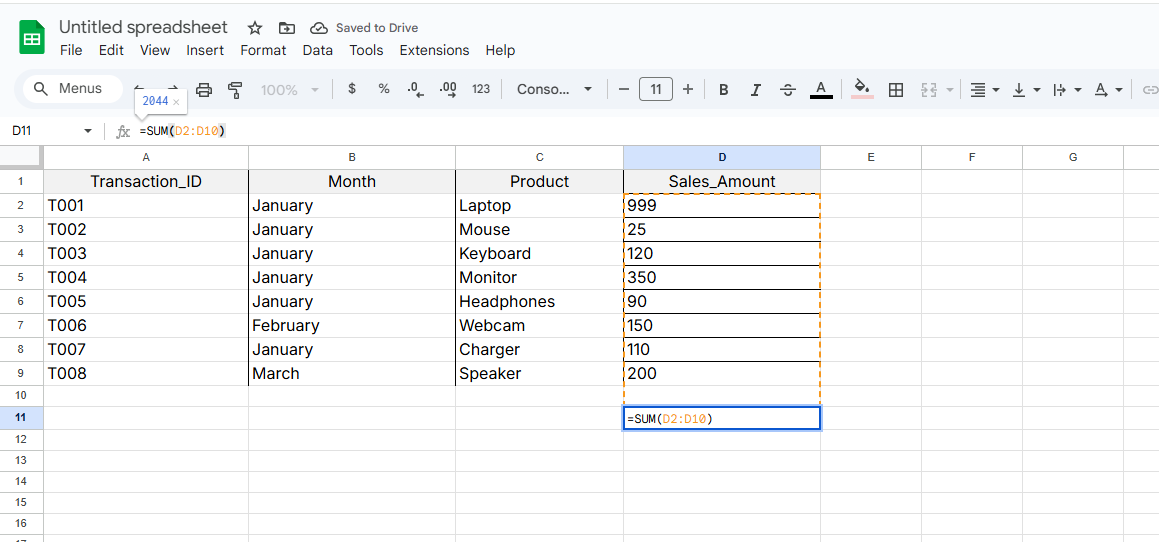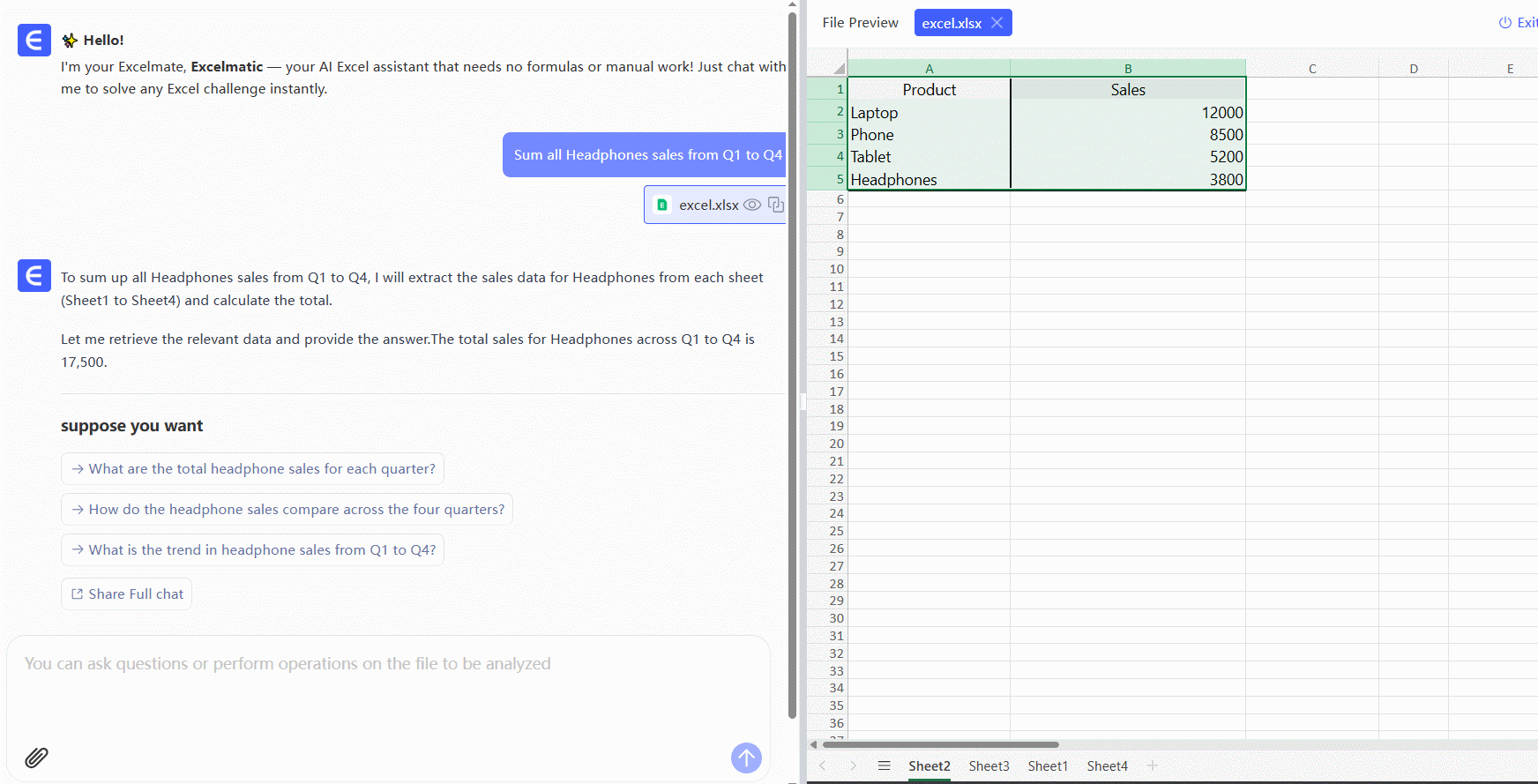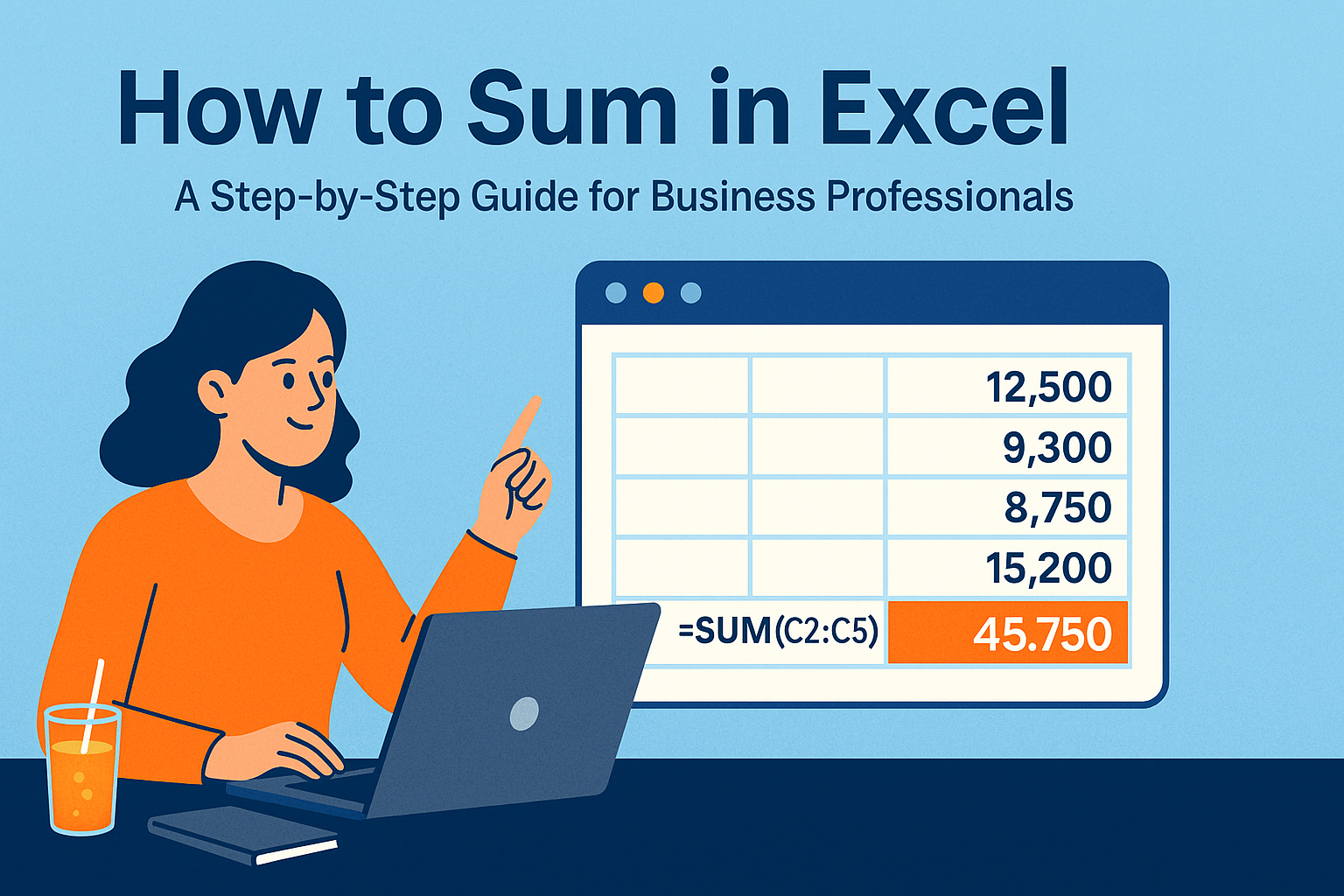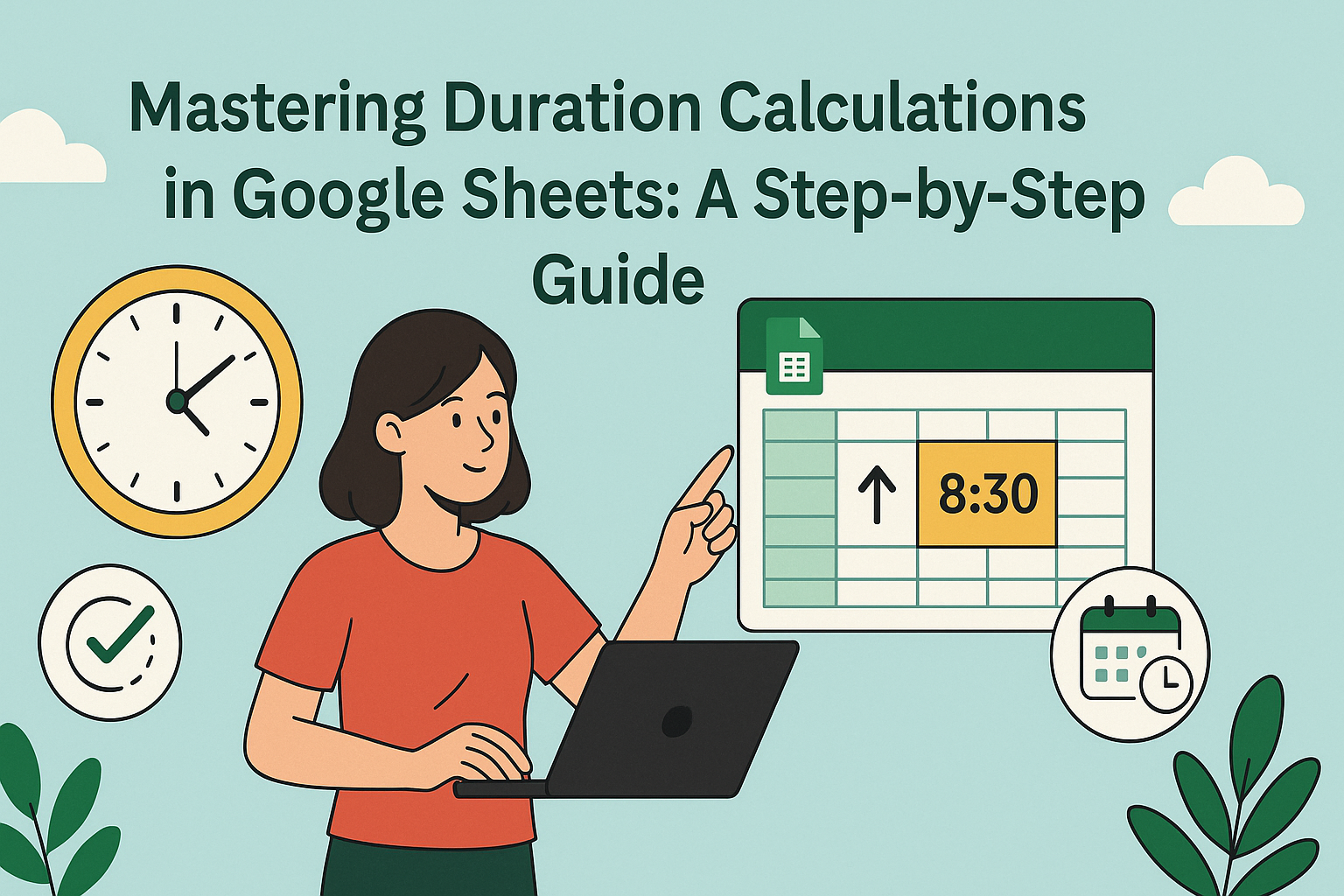We've all been there - staring at a spreadsheet full of numbers, wondering how to quickly get the total without manually adding each cell. Whether you're tracking expenses, analyzing sales data, or managing project budgets, knowing how to sum cells in Google Sheets is a game-changer for productivity.
At Excelmatic, we understand that time is money. That's why we're sharing these simple methods to sum cells, plus how our AI-powered spreadsheet tool can automate these calculations for you.
The Basic SUM Formula: Your New Best Friend
The simplest way to sum cells is using the =SUM() function. Here's how it works:
- Click where you want the total to appear
- Type
=SUM(then select your cells (or type the range like D2:D10) - Close with
)and hit Enter

Boom! Instant total. This is the foundation for all other summing tricks in Google Sheets.
AutoSum: The One-Click Wonder
For those "I need this done yesterday" moments, try AutoSum:
- Highlight the cells you want to add
- Click the Σ (Sigma) icon in the toolbar
- Watch as Google Sheets writes the formula for you
It's like having a calculator built into your spreadsheet. But if you're working with complex data regularly, you might want something even smarter...
Summing Non-Adjacent Cells: The Selective Approach
Need to total cells that aren't next to each other? No problem:
- Click your target cell
- Type
=SUM(then click your first cell - Hold Ctrl (Cmd on Mac) and click other cells
- Close with
)and Enter
This is perfect when you only need specific numbers from different parts of your sheet.
Level Up: Conditional Sums with SUMIF/SUMIFS
When you need to sum based on conditions, these functions are lifesavers:
SUMIF (single condition):
=SUMIF(range, "criteria", sum_range)
Example:=SUMIF(B2:B10, ">100")sums only values over 100SUMIFS (multiple conditions):
=SUMIFS(sum_range, criteria_range1, "criteria1", criteria_range2, "criteria2")
Example:=SUMIFS(D2:D10, A2:A10, "Marketing", B2:B10, ">=Q2")sums Marketing department Q2+ sales
Pro Tip: Handle Errors Gracefully
Mistakes happen. Wrap your formulas in IFERROR to keep things clean:=IFERROR(SUM(A1:A10), "Check your data")
Beyond Basic Summing: When to Use Excelmatic
While these Google Sheets methods work, they require manual setup. Excelmatic takes it further by:
- Automatically detecting and summing relevant data
- Creating dynamic totals that update in real-time
- Generating visual reports from your summed data
- Handling complex calculations with AI-powered analysis

Instead of writing formulas, just describe what you need in plain English. Excelmatic's AI will build the perfect calculation setup for you.
Advanced Users: Try These Power Moves
For spreadsheet ninjas:
- Use named ranges for cleaner formulas
- Combine with ARRAYFORMULA for bulk calculations
- Add conditional formatting to highlight key totals
- Connect to live data sources for automatic updates
The Bottom Line
Mastering cell summing in Google Sheets saves hours of manual work. But if you're ready to take your data analysis to the next level, Excelmatic can handle all these calculations - and much more - automatically.
Why waste time writing formulas when AI can do it for you? Try Excelmatic today and transform how you work with numbers.






